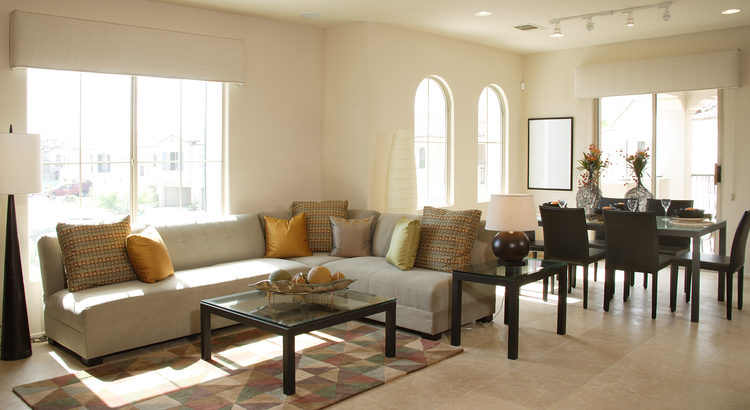When selling your home, making a strong first impression is key to attracting buyers and securing top dollar. Home staging—a process of preparing and showcasing your home for sale—can be a game-changer. Whether you’re new to the concept or looking for ways to improve your staging efforts, here’s a handy FAQ to guide you through the essentials.
What Is Home Staging?
Home staging involves arranging furniture, decor, and other elements in a way that highlights your home’s best features and helps buyers envision themselves living there. It can include anything from decluttering and cleaning to renting stylish furniture for showings.
Why Is Home Staging Important?
- First Impressions Matter: Buyers often form an opinion within seconds of entering a home.
- Showcases Potential: Staging helps buyers see how each space can be used.
- Increases Perceived Value: A well-staged home feels move-in ready, which can lead to higher offers.
- Faster Sales: Staged homes tend to sell faster compared to non-staged ones.
How Much Does Home Staging Cost?
The cost of home staging varies depending on the size of your home and the level of staging needed. On average, you can expect to pay between $1,500 and $3,000 for professional staging. However, even simple DIY staging, such as decluttering and rearranging furniture, can make a big difference without breaking the bank.
Is Home Staging Worth the Investment?
Absolutely. Studies show that staged homes often sell for a higher price and in a shorter timeframe than non-staged homes. The return on investment (ROI) typically outweighs the upfront cost of staging.
What Are the Basics of Home Staging?
If you’re tackling home staging yourself, focus on these key areas:
- Declutter: Remove unnecessary items to create an open, airy feel.
- Deep Clean: A sparkling home feels more inviting.
- Depersonalize: Remove personal photos and items to help buyers picture themselves in the space.
- Neutral Colors: Repaint bold walls with neutral tones to appeal to a wider audience.
- Curb Appeal: Don’t forget to stage the exterior! A tidy lawn and fresh flowers can make a big difference.
Which Rooms Should Be Staged First?
Not all rooms carry the same weight in the eyes of buyers. Prioritize staging these key spaces:
- Living Room: The heart of the home, where buyers often imagine themselves entertaining.
- Kitchen: A clean and organized kitchen is a major selling point.
- Primary Bedroom: Buyers want to envision a comfortable and relaxing retreat.
- Bathrooms: Clean, modern, and clutter-free bathrooms make a strong impression.
Can I Stage My Home While Living in It?
Yes! While it may take some extra effort, you can stage your home while living in it by:
- Keeping personal items tucked away.
- Maintaining cleanliness and organization.
- Minimizing furniture to create more space.
Do I Need Professional Help?
While DIY staging is an option, hiring a professional stager can be a worthwhile investment, especially for larger or high-value homes. Professional stagers bring experience, resources, and an objective eye that can transform your home into a buyer’s dream.
How Long Does the Staging Process Take?
The timeline for staging depends on the condition of your home and the extent of staging needed. Simple decluttering and cleaning can take a few days, while a full-scale staging project with rented furniture may take a week or more.
What Are the Most Common Home Staging Mistakes?
Avoid these pitfalls to make your staging efforts successful:
- Overcrowding the Space: Too much furniture can make rooms feel smaller.
- Neglecting Repairs: Staging won’t hide issues like leaky faucets or chipped paint.
- Overpersonalizing: Avoid overly unique decor that might not appeal to all buyers.
- Ignoring Lighting: Poor lighting can make even a beautifully staged home feel unwelcoming.
How Do I Know If Staging Worked?
If your home garners more interest, showings, and offers after staging, then you know your efforts paid off. Many sellers see increased buyer engagement and shorter days on market as a direct result of staging.
Conclusion
Home staging is a powerful tool for making your property stand out in a competitive market. Whether you’re working with a professional or tackling it yourself, understanding the basics of staging can help you attract buyers, sell your home faster, and potentially earn a higher selling price.
By answering these frequently asked questions, we hope you feel confident and prepared to stage your home to perfection. Ready to get started? Your dream buyer might be just around the corner!

Providing guidance and assisting motivated buyers, sellers, tenants, landlords, and investors in marketing and purchasing property for the right price under the best terms. Determining clients’ needs and financial ability to purchase the best home for them. Call me today and let me help you find a home that can change your life!
